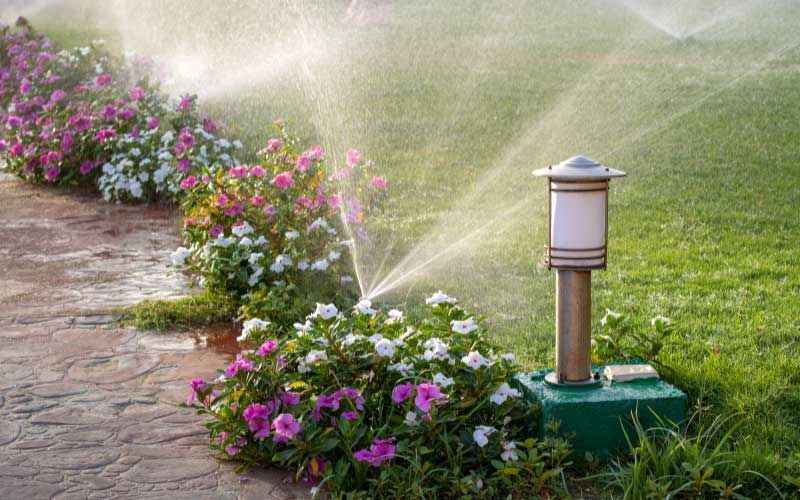
Tips for Landscape Design Beginners
Are you new to landscape design and hoping to spruce up your yard or create a beautiful garden for your enjoyment? Learning the basics of landscape design can be incredibly helpful. The main objective of landscape design is to achieve a harmonious aesthetic by incorporating elements like color, line, and texture. By mastering the basics, you’ll be able to design a landscape that is both sustainable and stunning. Continue reading for some tips and advice on landscape design.
Basic Principles of Landscape Design
Transition
When designing a garden, it’s vital to remember proportions to prevent abrupt or awkward transitions. For instance, a 5-foot-high stone wall can complement a large home, but the same wall would make a small home appear even smaller if the height is too similar. To avoid a similar scenario, consider adding taller trees between the house and the wall to create a gradual change.
Proportion
Proportion in landscaping refers to ensuring that the size of each component, such as plants or structures, and their groups within the overall landscape are balanced and harmonious.
Unity
Creating a garden design with a sense of proportion also involves unity. One way to create a unified feel is by thoughtfully placing landscape plants according to their form. For instance, if small trees flank a driveway or entrance, they should have the same form to promote unity. Repeating the same form also helps to achieve unity. When all the landscape plants in a garden design complement each other and are chosen with one overarching theme, you can achieve harmony and unity.
Rhythm
In landscape design, rhythm refers to the repetitive pattern of a specific element, such as plants. For example, planting the same type of plant in a row or hedge can direct the viewer’s gaze in a particular direction. Straight lines are particularly effective in controlling eye movement.
Balance
When it comes to yard aesthetics, balance is vital. Balance means ensuring that all elements are visually weighted and consistent. One way to achieve balance is by incorporating plants of the same size, shape, and color placed evenly throughout the garden or property. Another way is having a large tree on both sides of the house, which can help balance the yard’s overall look.
Focalization
To comprehend focalization, it is crucial first to understand the concept of balance. Focalization refers to the subtle directing of the viewer’s attention toward a specific focal point without causing any abrupt transitions. You can move the viewer’s eyes in a particular direction through different methods, but the most effective way is by utilizing well-balanced and consistent arrangements of elements.
5 Basic Elements of Landscape Design
You should consider these five essential elements for your landscape design, they include:
- Color: When designing your landscape, the color scheme is crucial. To choose the best colors for your landscape, consider using a color wheel to find complementary hues.
- Texture: To enhance your design, you can incorporate various textures with objects such as stones, plants, and paths.
- Line: The line in your design guides the viewer’s attention and marks boundaries.
- Form: The shape of a plant and its branching pattern determines its form. An example is the weeping willow, which has a droopy structure or form.
- Scale: The component size should be relative to the size of adjacent elements. For example, small shrubs in front of a large home will only look balanced if you use transitions around them.
Additional Tips for a Successful Garden
When planning your yard, it’s essential to consider your local climate. To determine which plants will thrive in your area, use the USDA zone map to find your zone. There are three main types of landscapes to consider, they include:
- Mountain
- Flat
- Coastal
When planning a landscape design, including hardscape and softscape elements is essential. Hardscape features are non-living items such as rocks, bricks, arbors, patios, and water features. Softscape elements, on the other hand, include living things such as lawns, shrubs, trees, plants, and gardens.
To highlight a specific feature in your yard, such as a fountain or statue, minimize any surrounding clutter and use color or design to draw attention to it. One way to do this is by creating a vibrant flower bed or crafting a straight stone pathway that leads directly to the focal point.
Professional Landscape Designers Near Me
Rich-Way Landscape is a premier landscape design company in the mid-south. Our award-winning team is always happy to assist those who want to learn more about landscape design. We hope that by reading this post, you learned more and might become as passionate as we are about designing stunning landscapes.
We understand many homeowners need more equipment, expertise, or desire to maintain their landscapes. We are here to help. We specialize in designing, building, and maintaining residential and commercial properties throughout Memphis, Tennessee. Our primary goal is to create an inviting environment for homeowners to relax and unwind after a long day and provide stunning landscapes for hosting events at your home or for commercial properties. We also understand that your landscape design is critical to increasing your home’s value. That’s why we’ll work with you to design a beautiful landscape that reflects your unique style and vision. When ready to take your property to the next level, contact us for an in-home consultation at (901) 853-9590.